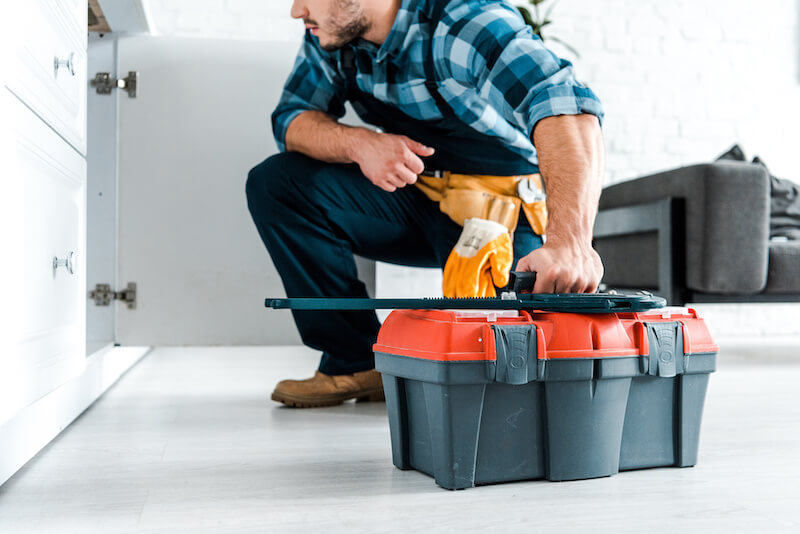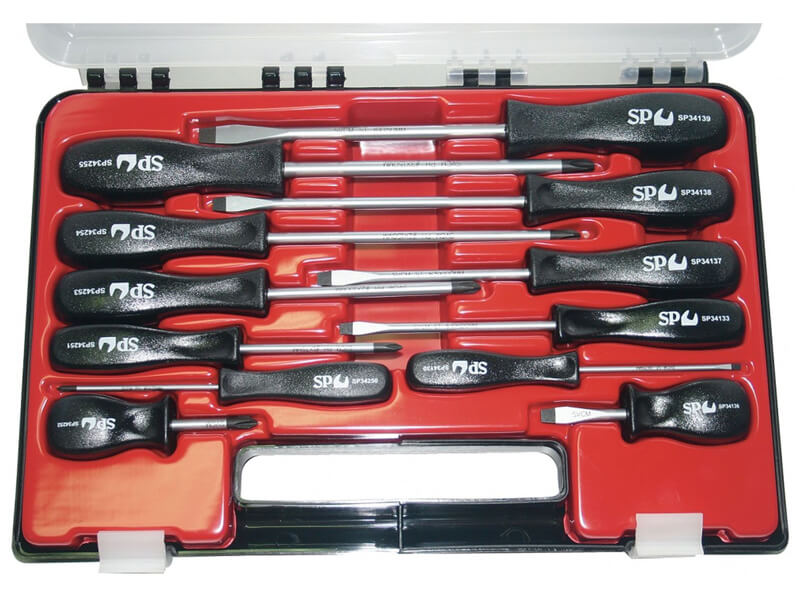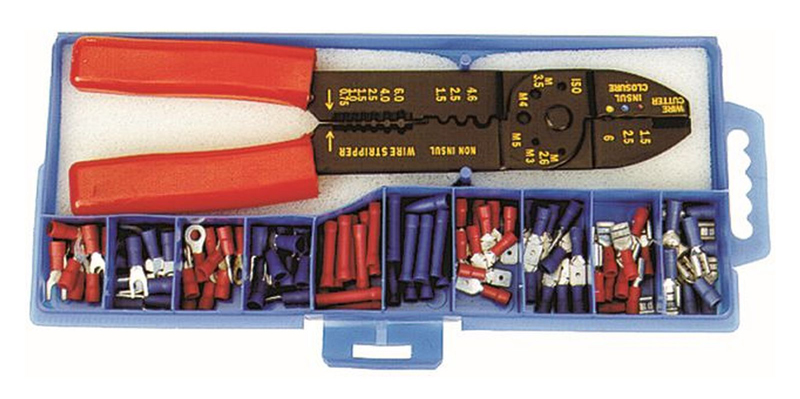9 Must-Haves in Your Toolbox in 2021
Date Posted: 27 January 2021

A toolkit with all the essential tools that you can depend on when you need to perform DIY jobs is a worthwhile investment. If there is one thing that 2020 taught us, it is that we should be prepared. In this blog post, we list tools that your toolbox should contain in 2021, whether you are an experienced builder or a newbie homeowner with budding DIY skills. Make home improvement easier with the following tools to have in your arsenal:
1. Toolbox
Any DIYer requires an efficient toolbox that can hold the collection of tools. These tools can be anything from screws to bolts to drivers, rulers, and more. Keeping the tool collection is necessary, so all items are accessible and organised properly. When searching for a toolbox, choose one that is easy to haul with large enough capacity. This way, it can handle as many tools as possible. Since you will be keeping some sharp materials, such as screwdrivers, the toolbox should be reliable and sturdy. A good example is this toolbox from KC Tools. It is made of heavy-duty plastic and has the following dimensions: 600L x 320W x 310H mm. It comes with a removable storage tray with lid parts and loads of space for your tools.
2. Screwdrivers

There are different types of screwdriver heads, which you might need during your home improvement tasks. Some of the most common ones are:
- Slotted: This type is also known as the flat head, flat blade, and straight screwdriver. Slotted screwdriver is a popular one with a chisel-shaped edge. Some resourceful homeowners choose to use it as a chisel when they do not have it ready. Slotted screwdrivers can sometimes work on a Phillips head screw. This screwdriver is a staple across different fields, although the top is prone to slipping out of the slot when applying too much pressure.
- Phillips: Most items today come with a Phillips head, including appliances and furniture. This type of screwdriver has an angled tip, allowing you to fit the screwdriver deeper into the head. Unlike a slotted head, the blade will not slide out. The driver's design lets it slip out of the head if you apply more force than its torque limit.
- Torx: Originally, Torx screwdrivers were created for security purposes. Over time, their usefulness enabled them to enter commercial functions. The blades somewhat look like a flower or star, providing tolerance for high torque.
- Hex Key: Also known as Allen wrench, a hex key is an unusual screwdriver but has become quite popular over the years. It usually does not have a tip or handle. You will easily recognise a hex key because of its six-sided shank with an L-shape. Allen wrenches, or hex keys are commonly used in maintaining or fixing a bike. However, furniture companies and appliance manufacturers also use them today. There is a specialised type of hex key, which is utilised in prison maintenance and other high-risk fields.
- Square Head: This screwdriver is also called a Robertson. It is a common yet almost unheard of type. Many DIYers who have this tool actually keep it at the bottom of the toolbox. However, if you're looking for a screwdriver with the highest tolerance, you may want to have this as part of your kit.
There are more types of screwdriver around, including clutch head, Frearson (Reed and Prince), and hex screw drive (nut driver). But since slotted and Phillips are the most commonly used, it makes sense for beginners to have these two types in their toolbox. Take a look at this 12-piece set from SP Tools, featuring Phillips and slotted screwdrivers. It comes with its own case, too.
3. Hammer

All toolboxes should have a hammer, which is a classic tool for every builder. A claw hammer is one of the most recognisable types with its curved back and forked claw used for gripping nail heads. This versatile hammer can be used in different jobs at home and your workshop. Other types include:
- Ball pein, which has a rounded pein and is used by engineers for rounding edges of metal fasteners and pins or shaping metal
- Club hammer (lump or drilling hammer) with a double-faced head like a sledgehammer
- Framing hammer, which looks like a claw hammer except with a straight claw and milled face or head for assembling building frames
- Rubber mallet with a rubber head for softer blows but can be used in woodworking and sheet metal
- Sledgehammer, which has a long handle and is double-headed like a mallet but used for heavy blows
No matter what hammer you need, ensure that the tool is easy to handle. Different hammers and brands have a different feel. It should feel right and comfortable in your hand. A 12-ounce hammer is the accepted standard, but you may also opt for a lighter one. Check out this five-piece set from GearWrench containing hammers and mallets, which are great for beginners.
4. Drill

The next on this list is a cordless drill, which we guarantee will make your DIY projects a breeze. You may be used to hand drills and screwdrivers, but a cordless drill can make your life much easier. Drills, as you may already know, are designed for drilling holes. They are also utilised for driving screws, as well as purposing or setting drill bits for specific jobs, including sanding and cutting holes. This 12-volt cordless mini drill driver from SP Tools has several features, including a two-speed controller, battery, 10 torque options, and a powerful motor with 17Nm torque capacity. The best thing about cordless drills is that they are compact. They can easily fit in your toolbox.
5. Angle Grinder
Angle grinders are a great addition in your tool arsenal because of their versatility. They can cut tile and pavers, grind metal, and break down mortar. That's not all; angle grinders can also sand, sharpen, and polish. They come in various sizes, from compact to large. You'll even find grinders powered by compressed air, gas, and electric, which can either be corded or cordless. Angle grinders are powerful, and with high-speed, so they can be dangerous for those who may not be familiar with them. The combined speed and power let them cut through different materials, making angle grinders even more useful than your favourite saws. When using an angle grinder, make sure that you wear protective gear, especially a face mask and goggles. The object you're working with should be secure using a workbench vice or something similar to avoid slips.
6. Sander
Sanders are powerful tools used for smoothing and finishing surfaces. You can find a variety of sanders available, including orbital, belt, and multi-sanders. Typically, orbital sanders, such as this three-inch mini orbital sander from KC Tools, are best used for fine jobs. As the name suggests, these tools operate by performing an orbital action. They are lightweight with a palm grip on top, allowing you to use them with one hand.
7. Pipe Wrench
There are different types of wrenches around, including a pipe wrench. The primary use of this tool is to tighten or loosen pipes. It is classified as an adjustable wrench because the upper jaw can move up and down. Pipe wrenches are easy to recognise compared to most other types of wrenches. They have toothed jaws that you can use to grip or hold threaded pipes. The jaws' design, particularly the top jaw, also known as the hook jaw, moves slightly in the frame. Therefore, when the handle is subjected to forward pressure, both jaws come together. You will find various sizes of pipe wrenches. The job you need to do will tell you which size to use.
8. Socket Wrench Set
A socket wrench, also known as a ratchet, lets you turn bolts and nuts with ease. You may already have your regular wrench, which can do the same job. However, a socket wrench is a better option. Its ratcheting feature can keep the wrench on the bolt. With a regular wrench, you will have to keep refitting the wrench each time you make a turn. If you're working in a confined space, it's hard to accomplish. The design of this tool is interchangeable, which means that you can handle a wide variety of tasks with different attachments or sockets.
9. Pliers

A pair of pliers is one more versatile tool that you should have in your toolbox. Most people have at least one pair in their home because pliers are truly useful. Pliers are often used for cutting and gripping. There are different types around, including:
- Crimping Pliers: Often used the same way as a nutcracker, crimping pliers can break through plastic coating leading to two sections to deform or crimp while still sticking together. These pliers are utilised in telecommunications and networking.
- Diagonal Pliers: Also called diagonal cutting pliers, wire cutters, and side-cutting pliers, these pliers have angled jaws for cutting through thick wires. Because of how strong these pliers are, they can even be used to trim nails, making them efficient not just for electrical work but also for carpentry. You will find a bunch of selections of diagonal pliers on our site, ranging from 115mm to 200mm.
- Needle Nose Pliers: Also called long-nosed pliers, this tool, as the name suggests, has an elongated nose designed to provide more precision. It is often used to cut, bend, and shape wires. Check out this pair of long needle nose pliers from Crescent.
- Circlip Pliers: You may know this tool as retaining ring, C-clip, lock ring, or snap ring pliers. These pliers have jaws that are suitable for closing circlips or C-clips. C-clips are open-ended rings that fit into a round object, such as the pegs of a dowel. These pliers are often used for mountain bike gears and other similar vehicles.
It's time to stock your toolbox this 2021 with the best quality tools around. Let The Grit help you find the tools you need that you should have ready in your arsenal. Whether you want a versatile toolbox or one full of tools for repair and maintenance, we've got you covered. Shop today or contact us to see how we can assist you.
